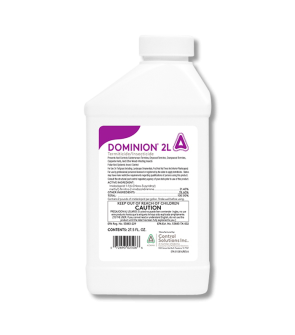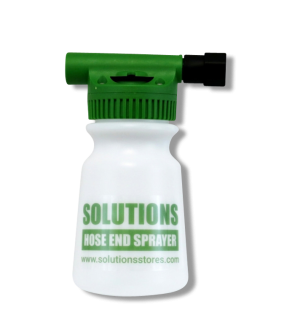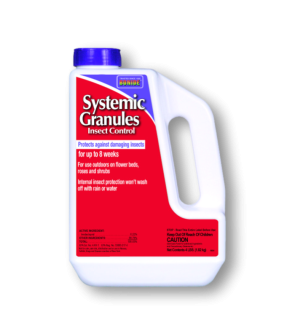Gain access to personalized product screening, the best pricing, rewards, and more!
Most Effective Products
Oriental Beetle Control: How to Get Rid of Oriental Beetles
This article is a general oriental beetle control guide. Using the recommended products and methods will help you completely control oriental beetle populations. Follow this DIY guide and use the recommended products; we guarantee 100% control over oriental beetles.
Oriental beetles, scientifically known as Exomala orientalis, are an exotic shining leaf chafer beetle native to Japan. They were accidentally introduced into North America through infested nursery stock where they quickly became established in the United States before 1920.
Since then, these destructive pests have spread widely across the United States for homeowners, landscapers, and turf managers, from Maine to Virginia and westward to Wisconsin and eastern Texas. The main threat posed by oriental beetles lies in their larval stage, where the grubs feed aggressively on grass and ornamental roots. This root feeding causes severe damage to the plant, leading to thinning, yellowing, and large dead patches that weaken the foliages overall health and resilience.
Adult oriental beetles also pose their own set of issues by feeding on the petals and leaves of plants. While adult feeding rarely kills the plants, it can reduce foliage vigor, lessen aesthetics, and make foliage more susceptible to stress and disease.
Known also as Anomala orientalis, this pest is notoriously difficult to manage without targeted interventions because their harmful grubs remain hidden beneath the soil. Understanding more about oriental beetles is crucial, and this article will focus on effective preventation and control strategies to protect your lawn and landscape from this persistent pest.
Identification
Before proceeding with treatment, you must be certain that the type of pest infestation you have is oriental beetles. Careless identification can lead you to use the wrong or ineffective insecticides, wasting your time and finances. A closer look often requires a microscope to accurately identify oriental beetle larvae. Below are some key features to help recognize oriental beetles:

- Oriental beetles are small, oval-shaped beetles that are roughly about 1/2 inch long in their adult form. The head is usually dark brown, and they have a hard, shiny exoskeleton that varies in color from solid black or mottled black and brown, and in some cases, a nearly plain light brown with little to no marking. Other defining characteristics include darker strips or mottled patterns running lengthwise along their wing covers. These patterns give these beetles a somewhat speckled or marbled appearance.
- These pests also have six legs and two short, clubbed antennae that can open into a fan-like shape.
- The larvae, commonly referred to as white grubs, are C-shaped, grow up to be about 3/4 to 1 inches long, and have a creamy white body with a brown head. Although they closely resemble the grubs of other scarab beetles, such as Japanese beetles and June beetles, they can be identified by the unique pattern of hairs (setae) on the underside of the tip of the abdomen, known as the raster. Oriental beetle grubs have two short, parallel rows of inward-pointing hairs. While this hair pattern is similar to June beetles, oriental beetle grubs also have a distinctive transverse slit on the backside, which helps differentiate them during close inspection.
Use the image and description above to help you correctly identify an oriental beetle. If you are unsure of the pest inhabiting your turf, contact us with a photo or sample of the insect in a ziplock bag or plastic container.
Inspection
Once you have confirmed oriental beetles on your property, you can proceed to the next phase of the control treatment, which is inspection. While it may sound simple, inspection is an important process that helps determine where to apply your products and avoid unnecessarily using them, thus increasing maximum elimination and cost.

Where to Inspect
Oriental beetles are commonly found in habitats such as frequently mowed lawns, golf courses, and the flowers of various ornamental plants, including daisies, roses, hollyhocks, phlox, petunias, dahlias, as well as many nursery plants. They can also be found on crops such as sugarcane, maize, and pineapple.
Common ornamentals for oriental beetle grubs are hemlock, holly, rhododendron, azalea, juniper, and andromeda.
Adult female beetles usually lay their eggs in moist soil around Julys, but they can also use drier spots. If the soil is too dry, the eggs won't hatch, which stops them from spreading when it's very dry.
What to Look For
By late June to July, oriental beetles will emerge from the soil and remain active until August. After hatching, the grubs feed on the roots of grass and other plants until the soil cools in September.
The adult beetles are often active throughout this time and mostly nocturnal, while their grubs live underground and feed on the roots of grasses and ornamentals.
By then, the grubs will have traveled up to 17 inches beneath the soil surface to overwinter. When the soil warms back up in spring, the grubs move back towards the surface to resume feeding.
This root feeding from the grubs can weaken plants, causing yellowing, wilting, thinning of grass, and eventual plant death if left untreated.
The feeding from the adults leaves behind small, irregular holes or notches on the flower petals and leaves. Adult oriental beetles tend to feed more on the flowers than the vegetable leaves.
Because the oriental beetle larvae live underground, the affected grass may feel loose or lift easily from the soil since the grubs have eaten the roots.
Treatment
After confirming the presence of oriental beetles and identifying the infested areas, you can begin treatment. Before starting, ensure you're wearing appropriate personal protective equipment (PPE), including gloves, a mask, safety goggles or glasses, a long-sleeved shirt and pants or coveralls, and closed-toe shoes with socks.
We recommend using systemic insecticides containing cyfluthrin, bifenthrin, permethrin, imidacloprid, or chlorantraniliprole for effective killing of oriental beetles.
Depending on your region, the best time to begin control for oriental beetles is typically from late June to early July. This time frame often targets the early larvae stages when they are just hatching, but before the grubs can start destroying foliage.
Step 1: Apply Dominion 2L
 To effectively get rid of oriental beetles, the key is targeting the grubs in the soil before they cause significant damage.
To effectively get rid of oriental beetles, the key is targeting the grubs in the soil before they cause significant damage.
One of the most effective treatments is Dominion 2L Insecticide, a systemic insecticide containing imidacloprid. This insecticide concentrate works by being absorbed into the plant's root zone, where it kills grubs and other pests as they feed.
Determine how much Dominion 2L Insecticide to use by measuring the square footage of the treatment area. Find the square footage by measuring the treatment area's length and width in feet, then multiplying them together (length X width = square footage).
You will need to mix this product with water in a handheld pump sprayer, backpack sprayer, or hose-end sprayer. We recommend the Solutions Hose End Sprayer to cover large areas more easily.
To control oriental beetle larvae in turf and ornamentals, use 0.46 to 0.6 fl. oz. of Dominion 2L Insecticide per 2 gallons of water per 1,000 sq. ft.
Treat ornamental plants from above and below to coat all leaf surfaces. Then broadcast the solution evenly over your lawn and plant beds. Spray to the point of wet, but not runoff.
For best results, water treated turf and ornamentals after application to help move the product into the top few inches of soil where larvae are active.
Keep people and pets away from treated areas until the spray has completely dried.
Prevention
Once oriental beetles have been eliminated from your yard, it's important to take preventive steps to keep them from returning. Below are several measures you can follow to help prevent future infestations.

- Preventing oriental beetles requires a combination of good lawn/ornamental care and timely insecticide applications. Maintaining a healthy yard is key with regular mowing, deep but infrequent watering, and regular fertilization. It's important to avoid overwatering in midsummer, as moist soil is ideal for beetles to lay eggs and for young grubs to survive. To deeply water, you will need to use 1 inch of irrigation once per week, preferably early in the morning to give enough time for the moisture to absorb into plants.
- For mowing, the general rule is to cut no more than the top 1/3 of the grass blades, which makes it less attractive for female beetles to lay eggs.
- Another strategy to prevent oriental beetles is to dethatch your lawn since the grubs can thrive in thick thatch layers.
- Aerating your soil helps to break up compacted dirt and improve drainage, making the lawn less appealing for breeding activity by adults and promotes stronger grass roots to survive pest activity.
- Lastly, preventative insecticides such as Dominion 2L Insecticide should be applied just before oriental beetle eggs hatch. Grubs start hatching from June to July, so the best time to make your initial application is around May, before the eggs are laid and hatched. Afterwards, make applications every 3 months to maintain protection from surface and subsurface insects throughout the year.
Key Takeaways
What are Oriental Beetles
- Oriental beetles are destructive lawn, ornamental, and crop pests that produce a single generation each year, whose root-feeding grubs can turn lush foliage into dry, patchy zones.
How to Get Rid of Oriental Beetles
- To get rid of oriental beetles, apply Dominion 2L to infested areas, targeting the grubs in the root zone where they feed, and water it in after application to ensure deep penetration.
Preventing Oriental Beetle Reinfestation
- Proper lawn care such as mowing no more than one-third of the grass blades, deep watering once per week, dethathcing, and aerating creates an environment less favorable for oriental beetles. Applying Dominion 2L Insecticide around May and watering it in after application helps to stop eggs from hatching and protects your lawn from grub damage.










